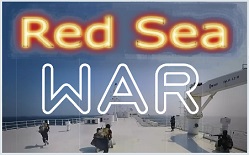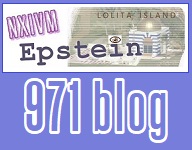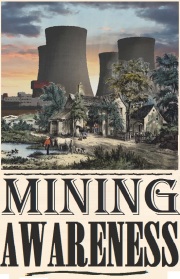By Trowbridge H. Ford
In the closed discussions that followed the attacks on New York City and the Pentagon, authorities in Washington initially appeared to act in a manner as if the incidents had occurred without warning. Congressional intelligence committees closed rank and immediately threw a blanket of exoneration over all agencies and personnel concerned.
Officials assumed that the hijackings had simply been the result of institutional inadequacies and shortcomings which could be remedied by a few decisions of senior level. This involved FBI Director Louis Freeh, who had just retired, and to advance huge amounts oif money to combat the growing threat of international terrorism. Other prominent officials thought that the problem would be reduced forever if DCI George Tenet, a Clinton appointee, had the grace to step aside quietly.
Washington simply lacked the ‘road map’ that the terrorists had used to get on the airliners in unison, hijack them, and crash them into two hugely important targets. Of course, individual agencies had picked up bits of information about what was planned -euphemistically called ‘dots’ – but no service had seen them all, nor was anybody in a position to put them into proper perspective. It seemed impossible for any reasonable agent to guess, much less determine, where the terrorists were headed, and why. The FBI’s counter-terrorist people had been starved of resources by Congress and of intelligence by other agencies, especially from the CIA.
During the past year, we have slowly learned that this convenient cover up of the tragedies is not necessarily true. FBI agents in Minneapolis had well-founded suspicions that Zacarias Moussaoui was involved in a huge conspiracy to hijack airliners for some deadly purpose. The agents were prevented by superiors in Washington from pursuing the matter. A similar situation occurred in Phoenix.
A memorandum written by Special Agent Ken Williams supplied headquarters with information concerning a number of people who sought ‘limited pilot instruction’ at a nearby flying school. State Police could have interfered, if not ended, the extensive activities of several key 9/11 hijackers had cooperation been better. A number of the would-be hijackers committed speeding violations, and had police been informed of the FBI suspicions, they would surely have been detained. Instead, the intelligence community was caught totally off guard.
There have been suggestions that the FBI and CIA were involved in a deadly competition to outwit and out-do each other. Freeh wanted to prove that it was his service that was the leading agency when it came to preventing international terrorism, while Tenet’s agency hoped to show that it knew best how to handle the threat. It was a deadly game of deception, especially in the case of one John O’Neill.
O’Neill was tragically killed during the attacks on the World Trade Center. Previous to his death, he was head of counter-terrorism at the FBI’s New York office. O’Neill had just resigned from the FBI because he had hit a stone wall from headquarters after trying to capture those responsible for the attack on the destroyer USS Cole in Yemen in October 2000. He took up the lucrative post as chief security officer at the Trade Center. On one occasion, he told Mayor Giuliani’s counter-terrorist Czar, Jerry Hauer, “they’ll never stop trying to take down these buildings.”
O’Neill blossomed in the FBI, especially when he arrived in New York shortly after the first attack on the WTC in 1993. Thanks to his growing understanding of Islamic fundamentalism, he put together the special operations team which captured Ramzi Ahmed Youseff in Pakistan for his part in the bombing, plotting to kill 4,000 airliner passengers by bringing down a dozen planes, and to assassinate Pope John Paul II. O’Neill was also influential in the arrest of the terrorists living in New York, and persons who killed 224 people at the American Embassies in Nairobi, Kenya, and Dar es Salaam, Tanzania in 1998.
O’Neill was not just obsessed with catching terrorists. While working as a fingerprinter and tour guide, he earned a Master of Science degree in forensic science from Georgetown University. Due to his educational background, O’Neill took a broader view of terrorist crime than his colleagues. When TWA Flight 800 exploded over Long Island in July 1996, O’Neill’s boss, James Kallstrom, put together a team to try and prove that it was more handywork from Youseff’s followers. Oliver ‘Buck’ Revell, the Bureau’s former head of criminal investigations and controller its investigation into the PAN AM bombing over Lockerbie, concluded that the TWA airliner was blown up by a Semtex bomb. The controversial Pierre Salinger, JFK’s former Press Secretary, claimed that a rocket had brought down the airliner.
O’Neill hardly made any friends when he conclusively proved that the airliner had been brought down by the ignition of leaking fuel from one of its petrol tanks. Mary Jo White, the former US Attorney for the Southern District of New York, and with whom O’Neill had connected the dots in the Youseff case, said of O’Neill: “He had elbows – he’s press his point very hard.”
FBI and CIA Rivalry
The rivalry between the CIA and the FBI, and growing resentment of O’Neill within the FBI leadership, came to a head when he started investigating al-Qaida’s bombing of the USS Cole in Aden. In January 1999, the CIA had taped a meeting between al-Qaida operatives, Khalid Al-Midhar, Nawaf Al-Hamzi, Ramzi Bin Al-Shibh, and Tawfi Bin-Atash aka Khallas, in Kuala Impur, Malaysia. They even managed to discover that Al-Midhar had a passport with a valid American visa in his own name. The group discussed terrorist attacks against American targets – which resulted in the ramming of the Cole a few months later.
The CIA claimed that it e-mailed the FBI about the meeting and Al-Midhar’s visa. The FBI denied ever receiving it. Still, the CIA tracked Al-Midhar and Al-Hamzi to Los Angeles where they soon set-up residence in San Diego. The FBI’s claim of ‘total ignorance’ is odd for it allegedly recruited the landlord of the mens apartment as an informant, and that he regularly reported to an FBI handler. The Bureau is now stonewalling any appearance by either of the men before the joint congressional intelligence committee inquiry. They would reveal how the relationship started; what the informant knew of the comings-and-goings; a record of their calls, thought, and visitors; and information that the FBI tried to cover up by going after scapegoats, especially Jordanian college student Osama Awadallah after the attacks.
While this was going on behind O’Neill’s back, he was struggling in Yeman to catch the culprits in the Cole attack. O’Neill pushed his agents to get answers. However, ambassador Barbara Bodine agreed to Yemeni demands in November 2000 that O’Neill be barred from entering the country. The only result he achieved was the discovery and arrest of Al-Quso who only the suspects by sight.
Nothing changed for O’Neill with the election of George Bush. Washington considered O’Neill’s concerns about al-Qaida and the Taliban but failed to take them seriously. The White House thought that it could do business with Taliban leader Mullah Omar, until his friend bin-Laden assassinated Northern Alliance leader Ahmed Shah Masood. Washington believed Omar could help secure an oil pipeline to transmit Caspian oil to the Indian Ocean and circumvent Russian and Arab domination of the process.
The State Department and the Justice Department did nothing to rescind the restriction which had been placed on O’Neill’s activities.
Freeh’s Message
Washington’s readiness to stop the terrorist attacks was well captured in Freeh’s departing message to the Senate in May 2001, when he equated the international threats to America to those domestically generated regarding human and animal rights, the environment, and states’ rights. The Director, along with Kallstrom and Revell, called upon Bush to bomb Iran, the leading state on the State Department’s list of countries “sponsoring terrorism.”
The CIA was sufficiently concerned about the FBI’s lack of action in the face of the growing threat of terrorism, and arranged a meeting at its New York office on 11 June 2001. The meeting turned into a shouting match when CIA agents refused to tell what they knew about Al-MIdhar and Al-Hamzi. By this time, O’Neill was in the process of resigning and talking to French reporters Jean-Charles Brisard and Guillaume Dasque, who were researching The Forbidden Fruit about how the White House plan was the Taliban was interfering with the war on terrorism.
On 4 July, Al-Midhar and Al-Hamzi came to New York, but apparently, nothing was done by the Bureau to keep track of the men; it was simply counting on the landlord in San Diego to inform them. In August, the CIA added the men to its Watch List. After receiving no response from the FBI, the CIA sent the NYC Field Office a memo on 23 August asking for help in tracking them down.
The FBI discovered that the prime suspects had checked into New York’s Marriott Hotel quite close to the WTC, but had immediately disappeared. O’Neill assistant asked for a criminal investigation of Al-Midhar, but headquarters refused on the grounds that there was insufficient evidence.
In late August, O’Neill’s last act for the FBi ws to authorise the investigation of Yemeni Al-Quso. The request was not acted upon until after 11 September. When Al-Quso was shown the CIA photographs of Al-Midhar, Al-Hamzi, and Al-Shibh from Kuala Lumpur, he immediately recognised the men as the perpetrators of the attack on the USS Cole. If O’Neill had not been barred from Yemen and shut out of any meaningful discussions of what the terrorists might be planning, the tragic attacks might not have taken place.
After his three decades with the FBI, the UPI’s Mike Kirland recently wrote: “O’Neill was a near legend in the counter-terrorism field.”
Yet only in death did the FBI give O’Neill his due. At his funeral, his body having been found among the rubble of the WTC 11 days after the attacks, Freeh declared: “He was paramount, the most knowledgeable agent we had in the FBI, probably in the government with respect to counterintelligence matters. The human embodiment of unheeded warnings.”
The former Director did not explain why O’Neill’s abilities were simply discarded when it needed them most.




















[…] […]
LikeLike